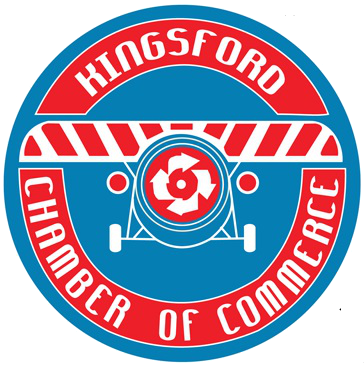Written by: T. Brogan
The area of South Kensington, now called Kingsford, was originally part of a 570 acre land grant to a Samuel Terry in 1823. Today this area is approximately from Anzac Pde. to Southern Cross Drive and from Gardeners Rd. to Dacey Ave. Moore Park. Samuel was a convict from England but had served his time. He was convicted in the Lancaster Assizes in England for stealing and sentenced to 7 years in NSW arriving in 1801. In this area in 1819 Samuel established a mill producing flour, bran and pollard and the mill was on the Lachlan Stream which flowed across his land from today’s Centennial Park to Botany Bay. This stream was Sydney’s second water supply until 1886 when Sydney started taking water from the new Nepean River System. Samuel’s mill was called The Lachlan Mill, named after Governor Lachlan Macquarie, and it stood on the site of the current Kensington Oval. It only operated for ten years till 1828 and then in 1832 Atkinson’s wool wash was established on the same spot but due to contamination of the water supply this was closed. Samuel Terry died in 1838 and his land was later transferred in 1886 to the Kensington Freehold Estate Co, the shareholder living in Kensington London. Because of the high usage of the water in the stream by 1867 the flow had become minimal to Botany Bay.
In 1896 Kensington racecourse started operating, mainly for small horses or pony racing, and a 1000 seat and a 500 seat grandstand and totalisator was erected. Nearby Randwick racecourse had been operating since 1860 and also in the area was Rosebery racecourse on Gardeners Rd., now the suburb of Eastlakes and Ascot racecourse Mascot, just off Botany Rd. at the current railway level crossing and now part of Sydney Airport. In 1900 a steam tram started operating for the people from Central Railway to Kensington racecourse, which brought a lot of money to the area to set up home, especially those involved with racing. In 1905 the first electric trams operated to the races and by 1912 the tram system had increased to a double tram track to handle the people and went out to the Coast Hospital at Little Bay, even though very few people lived in that area. The racecourses had very large multi-track tram sidings for the people. Randwick’s was behind the grandstands within the grounds but Kensington’s was a large siding on the west side of Anzac Pde. part of which is the current site of NIDA. Kensington siding closed in 1940 and trams stopped running down Anzac Pde. 25th February 1961.
In 1891 the Kensington Estate, around current Todman Ave. area, was sub-divided and sold off for residential houses. In the early 1900s the area further south which was originally horse stables, pig and poultry farms, was soon to become houses and was called South Kensington. The wide main boulevard from Darlinghurst through to Kensington was called Eastern Avenue and at the turn near Addison St., it was Bunnerong Rd. out to South Kensington. In 1919 after WW1 both names were changed to Anzac Parade. It was the fastest growing suburb post WW1 of any Sydney suburb with many of the racing fraternity living in the area and trams every few minutes. In 1901 the population was only 10,000 and by 1933 was more than 79,000. In June 1929 the Mayor of Randwick declared the shopping area on Anzac Parade the premium shopping centre of the Municipality. In the 1930s large white street pendant lamps were installed and lit up at night and Anzac Pde. to South Kensington was known as “White Way”, so a few businesses included the name “White”.
Herbert Dudley in the early 1900s was a local real estate agent and sold much of the Kensington, South Kensington and Maroubra land. At this time some of the area of present day Kingsford and Maroubra Junction was known as South Randwick up to 1930. In the early 1920s he put the South Kensington area up for sale listing it as “Kensington Golf Links Estate”. In 1912 he built Dudley’s Emporium at Maroubra Junction and the facade of the original building still stands today. It was known as “The Big Shop” which included 6 shops and a cinema on the first floor which later became a dance hall.
On the 22nd February 1859 Randwick Council was proclaimed. There was a lot of postal confusion between the suburb Kensington and South Kensington and the local chamber of commerce launched a competition for a new name with a grand prize of one guinea, about $2 today, for the best name. The four finalists were Kingsford, Wembley, Chelsea, and St Kilda. The chamber warmed to Kingsford, after the famous aviator Sir Charles Kingsford Smith. Randwick Council, agreed and adopted the recommendation and made a proclamation on 25th June 1936 which came in effect on 1st October 1936. At this time there were nearly double the houses in South Kensington than in Kensington.
Kensington racecourse served as a military camp during WW1 as it had a large lake for the horses. By 1942 all racing was across the road at Randwick and the military again took over Kensington racecourse during WW2. After the war it was used as an immigration settlement and the Old Tote building on the racecourse was called the Endeavour Migrant Hostel. In 1950 Kensington racecourse was allocated by the government to be used as the location for the University of NSW lower campus. Randwick Golf course and Randwick Oval became the upper campus. The Endeavour Hostel became The Old Tote Theatre in 1967.

Recent Comments